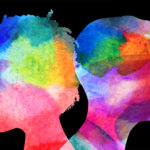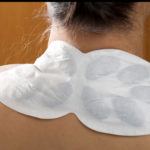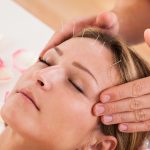Cluster Headaches

What Are Cluster Headaches?
These severe headaches are five times more common in men than women. They usually begin appearing between the ages of 20 and 40 and affect only one side of the head. Cluster headaches typically occur multiple times a day at the same times every day – often an hour or two after going to sleep – for a period of weeks or months. Then, the “cluster” ends, leaving you headache-free for weeks, months, even years.
What Are The Symptoms Of Symptoms Of Cluster Headaches?
Cluster headaches are characterized by severe, throbbing pain usually concentrated around an eye and temple that typically lasts for 15 minutes to three hours. During a cluster, the headaches tend to occur an average of twice a day over four to six weeks. Other symptoms may include nasal congestion on the affected side of the head and tearing and reddening of the eye on that side. The pupil may become smaller and the eyelid may droop. The forehead and face may sweat. The pain is often severe; people describe it as feeling like “a hot poker in the eye.”
These headaches most often occur in spring and fall. They don’t run in families. Most affected men are heavy smokers. (Quitting smoking doesn’t stop the headaches immediately but may help over time.) Many patients also have sleep apnea. Drinking alcohol during a cluster period can set off an immediate attack, as can strong odors such as those from gasoline or paint fumes, perfume or bleach. Exercise or becoming overheated can also bring on attacks.
What Are The Causes Of Cluster Headaches?
No one knows for sure what causes cluster headaches, but researchers suspect that they are due to a malfunction of neurotransmitters – in particular, serotonin – which control the action of the blood vessels in the head and neck. The pattern of cluster headaches – the fact that they often occur at the same times daily – suggests that the biological clock in the hypothalamus may play a role. Before cluster headaches can be diagnosed, other possible conditions, including migraine and trigeminal neuralgia (sudden, intense facial pain due to irritation of the trigeminal nerve) must be ruled out. Diagnosis is based on a thorough history of symptoms. An MRI scan may be recommended to rule out other causes of the pain. Because these headaches are rare, your physician may refer you to a specialist who is experienced in diagnosing and treating them.
Prevention Of Cluster Headaches
In 2018 the FDA cleared a handheld vagus nerve stimulator for use in the prevention of cluster headaches (and migraines) in adults. It is placed over the vagus nerve in the neck and releases a mild electrical stimulation to the nerve’s afferent fibers. The device, which is available by prescription, is intended to be used daily during a cluster period or daily year round depending on your physician’s recommendation within an hour of waking and again 7 to 10 hours later. Each treatment consists of three consecutive two-minute stimulations. In studies, 40 percent of patients treated experienced at least a 50 percent reduction in weekly cluster attacks. The few side effects reported include neck pain and dizziness. All were said to be transient.
Conventional Treatment Of Cluster Headaches
According to the American Migraine Foundation, taking medication in pill form to treat cluster headaches isn’t recommended because the pain usually peaks in less than 15 minutes, too fast for a pill to work. The following are the most commonly used treatments for these headaches:
- Oxygen: Inhaling 100 percent oxygen through a face mask for 15 minutes as soon as possible after a headache begins can bring relief in up to 80 percent of all cases.
- Sumatriptan: This drug used to treat migraines can effectively relieve cluster headaches when injected or given as a nasal spray.
- H.E. 45 (Dihydroergotamine): Injections of this drug or nasal spray can help reduce cluster headache pain by narrowing blood vessels in the head which have become dilated.
- Zolmitriptan: Administered as a nasal spray, this medication is approved in the European Union for treatment of cluster headaches.
If these treatments don’t help alone or in combination, surgery to disable the nerve that carries the pain signals may be recommended. This works in about two-thirds of all cases.
A number of drugs also can help prevent as well as relieve cluster headaches. They include:
- Verapamil: A calcium channel blocker intended for treatment of high blood pressure, it is considered the most effective medication for prevention of cluster headaches. The starting dose is 80 mg 3 times a day to be increased until it helps. Regular heart monitoring with electrocardiograms (EKGs) is recommended for patients taking high doses of Verapramil.
- Prednisone: This steroid drug may be used for 3 weeks, starting at up to 60 mg for 4 days and then tapering the dose down. It can be used only once a year because the repeated use of steroids for any purpose carries significant risks.
- Lithium carbonate: Used to treat bipolar disorder, this drug may be recommended to help prevent chronic cluster headache if nothing else has worked. Side effects include tremor, increased thirst and diarrhea. When taking this drug, you’ll need periodic testing to make sure you’re not developing more serious side effects, including kidney damage.
- Melatonin:Some small studies indicate that taking 10 mg of melatonin nightly might help reduce the frequency of cluster headaches.
In addition, a nerve block, which involves injecting an anesthetic and corticosteroid into the area around the occipital nerve at the back of the head, might help reduce the frequency of chronic cluster headaches.
What Does Dr. Weil Recommend For Cluster Headaches?
Dr. Weil recommends eliminating all caffeine as a first step for prevention and also practicing some type of relaxation technique such as biofeedback. He also advises trying acupuncture as a treatment and taking supplemental magnesium as a preventive (400 mg daily).
Source:
M.S. Robbins et al, “Treatment of Cluster Headache: The American Headache Society Evidence-Based Guidelines.” Headache, July 2016 doi: 10.1111/head.12866














